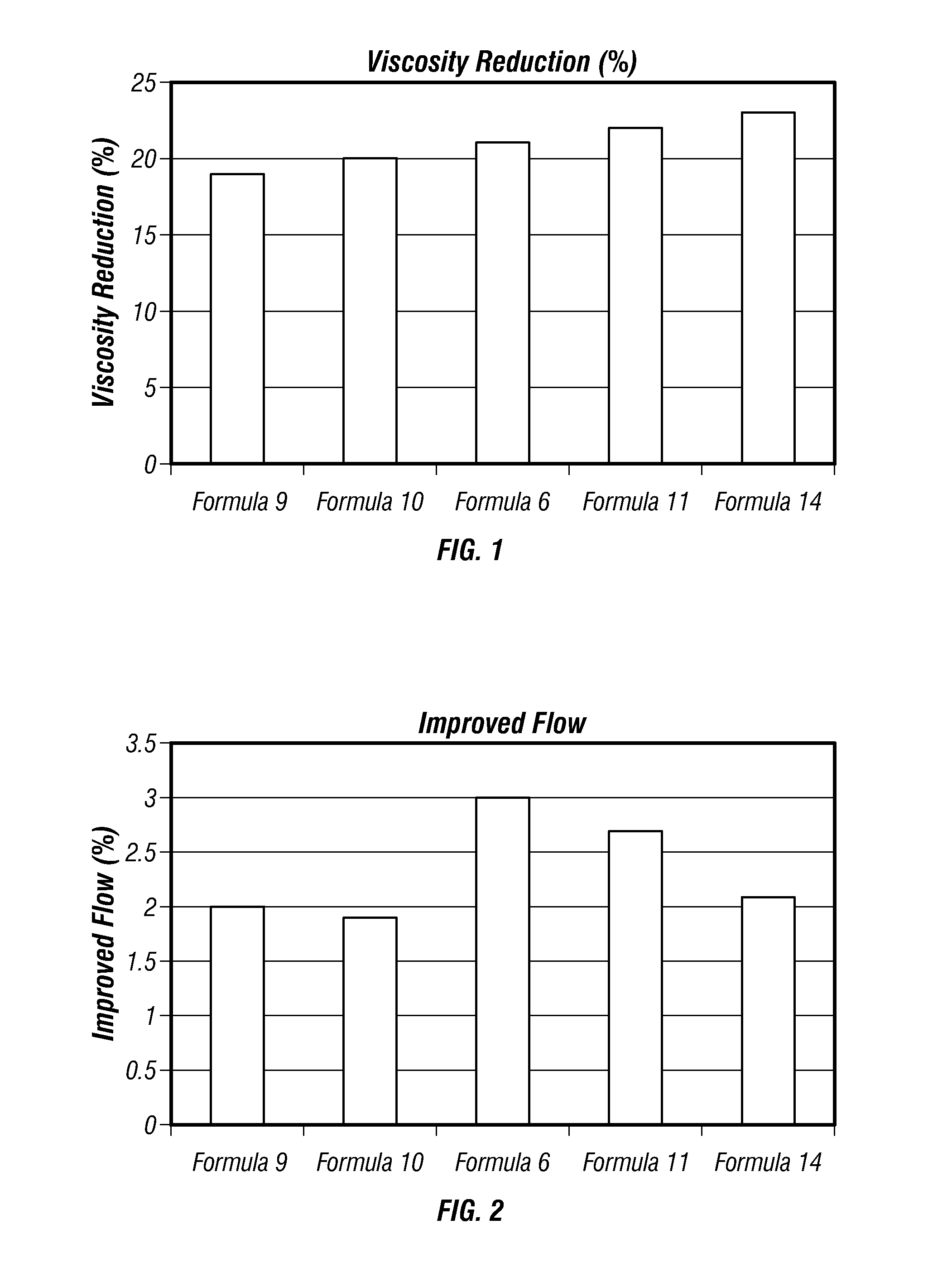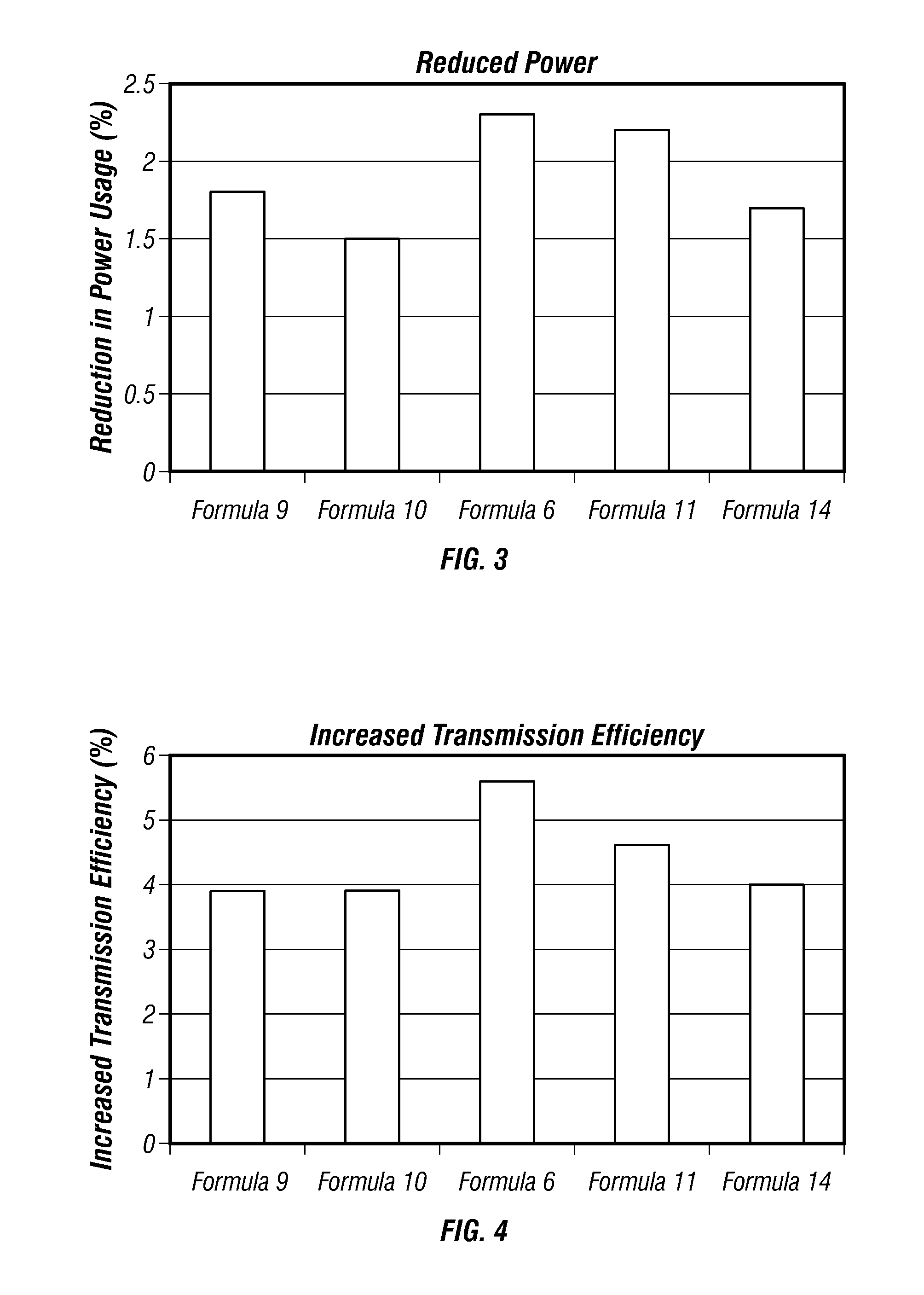Additive to Improve Flow, Reduce Power Consumption and Pressure Drop in Heavy Oil Pipelines
a technology of additives and heavy oil, which is applied in the direction of mechanical equipment, transportation and packaging, organic chemistry, etc., can solve the problems of increasing energy requirements for the condensate to be evaporated from the heavy oil and its transmission back to the production site, increasing the cost of energy requirements, and increasing the cost of condensate. , to achieve the effect of improving the flow of oil
- Summary
- Abstract
- Description
- Claims
- Application Information
AI Technical Summary
Benefits of technology
Problems solved by technology
Method used
Image
Examples
examples 6 , 9 , 10 , 11 and 15
Examples 6, 9, 10, 11 and 15
[0025]Five formulas were tested on a crude oil which was a Canadian bitumen diluted with between 25-30 vol % naphtha diluent. The naphtha was about 60 / 40 vol / vol aliphatic / aromatic hydrocarbons. The five formulae had the compositions set out in Table I:
TABLE ITest Formulae - Wt %Formula91061114Polymeric alkyl-substituted phenol55555formaldehyde resinSolvent mixtureEthyl acetate, wt %—47.5—9585Butyraldehyde47.5————Toluene47.547.595——Isopropyl alcohol————10
[0026]FIG. 1 shows the viscosity reduction capabilities of various formulations in the methods herein. FIGS. 2 to 4 show the performance of the various additives in a flow loop. At a dose rate of 1 percent, the formulation can increase the flow and reduce the power consumed to pump the heavy oil and the pressure drop in the pipeline simultaneously by about 3 percent each, or keeping the power constant, can increase the flow by about 6 percent.
[0027]The additives are miscible with the oil and do not change...
PUM
| Property | Measurement | Unit |
|---|---|---|
| wt % | aaaaa | aaaaa |
| vol % | aaaaa | aaaaa |
| wt % | aaaaa | aaaaa |
Abstract
Description
Claims
Application Information
 Login to View More
Login to View More - R&D
- Intellectual Property
- Life Sciences
- Materials
- Tech Scout
- Unparalleled Data Quality
- Higher Quality Content
- 60% Fewer Hallucinations
Browse by: Latest US Patents, China's latest patents, Technical Efficacy Thesaurus, Application Domain, Technology Topic, Popular Technical Reports.
© 2025 PatSnap. All rights reserved.Legal|Privacy policy|Modern Slavery Act Transparency Statement|Sitemap|About US| Contact US: help@patsnap.com


